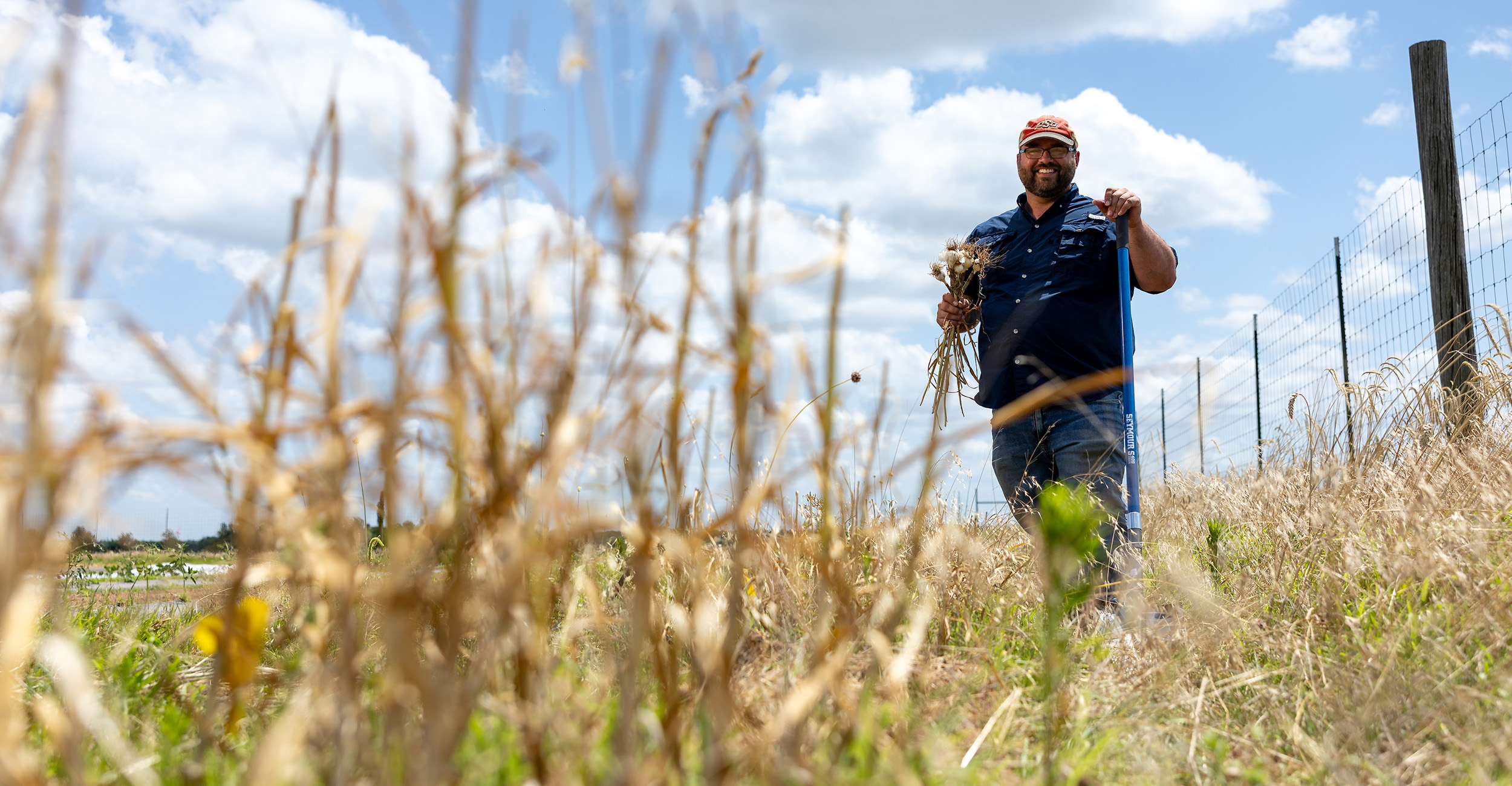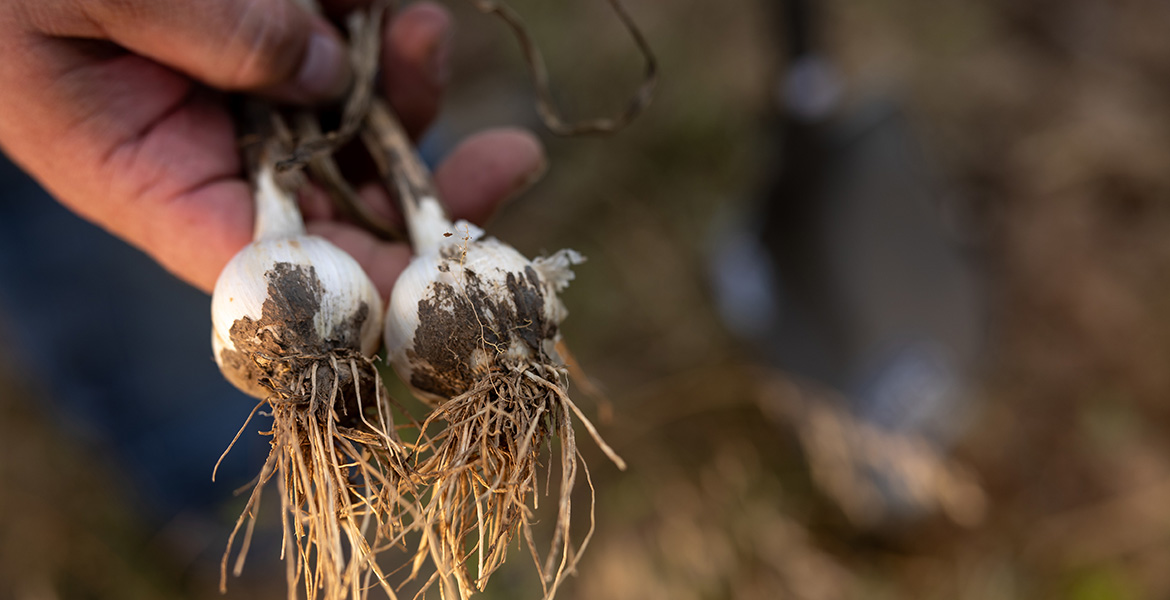
Oklahoma garlic research proves fruitful and flavorful
Monday, July 22, 2024
Media Contact: Trisha Gedon | Sr. Communications Specialist | 405-744-3625 | trisha.gedon@okstate.edu
A horticulture scientist with Oklahoma State University Extension has spent the last seven months researching the germination and harvest of 10 varieties of garlic in Oklahoma.
After learning that all of the garlic grown in Oklahoma is produced by 28 growers on just nine acres of land, Tyler Mason, OSU Extension vegetable specialist, wanted to help garlic growers expand their profits.
“Garlic is a unique plant because growers plant a clove and harvest a bulb,” Mason said. “The bulb grows underground while producing a stem above ground. We planted the trial in October 2023 and just recently completed the harvest. Although the growing season is longer than many garden vegetables, garlic is simple, and gardeners can easily grow all they need for personal use and to sell with just a row or two in their gardens. It’s not just a crop to grow, it becomes a flavor for the other things in the garden.”
Garlic comes in two main types – hardneck and softneck. Hardneck grows better in cooler climates and boasts a stronger flavor, while softneck is better suited for warmer climates and features a milder flavor. Most garlic available in grocery stores is the softneck variety.

Mason’s trial cultivars included Sicilian Artichoke, Purple Glazer, Music, German White Stiffneck, California Early, Duganski, German Extra Hardy, Chesnock Red, Inchellium Red and Romanian Red. Each variety is different in appearance and performance, including bulb diameter and weight.
“The name of the game in this trial was plump bulbs and high yield,” he said. “These two factors will enhance the profitability for growers,” he said. “The top producing cultivar was German Extra Hardy. It produced well even with heavy weed pressure.”
Victor Ware, a Ferguson College of Agriculture student pursuing a master’s degree in horticulture, assisted Mason in the study.
“My role in the project was to maintain recommended growing conditions, and now I’ll be working to prepare a thesis over the findings,” Ware said. “Working on this project is beneficial not only to garlic research, but it also helps me directly since I live on a farm and plan to grow various crops, including garlic.”
Mason said there’s nothing wrong with minced garlic purchased at the store, but it does lack the more robust flavor of fresh garlic.
“If you want to add unique flavor to the vegetable you’ve grown and other foods you prepare, locally produced garlic is the way to go,” he said. “Most store-bought garlic is imported from China or California, so it has traveled a long distance to get here. Fresh, locally grown garlic is hard to beat.”
Mason plans to analyze the garlic trial results and share them with vegetable producers around the state to boost production and profits.
